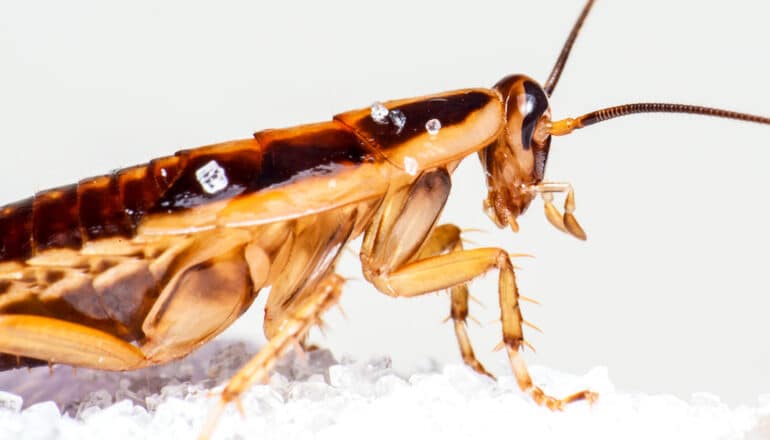
Researchers have unveiled insights into the origins of the common German cockroach.
It turns out the cockroach, Blattella germanica, found across the globe, is a pest of our own making.
For centuries, the German cockroach has thrived in close proximity to human populations, infesting homes, apartment buildings, work offices, and other structures.
“Unlike many other pest species, which have natural populations in diverse habitats, German cockroaches have no known natural populations,” says Edward Vargo, professor of urban entomology in the Texas A&M College of Agriculture and Life Sciences Department of Entomology. “They rely solely on human activity and manmade structures.”
Cockroach evolution
For years, many scientists have wondered where these household pests originated and how they came to scurry across our kitchen floors.
The new research addresses these lingering questions by diving deep into the DNA of cockroaches from across six continents. Their analysis uncovers the evolution of this insect species and sheds light on the German cockroach’s close association with human habitats.
While their name might indicate origins in Germany, that name came from a taxonomist presented with a specimen from Germany, but that is not considered their origin.
“Many people speculated over the years that the species’ origins came from Africa or Asia,” Vargo says. “It has been intriguing to find out that those who said Asia were right all along.”
The study provides a detailed genetic analysis that shows German cockroaches originated from the Asian cockroach approximately 2,100 years ago. Alongside this development, the cockroaches began to adapt to human-built environments, eventually leading to a dependence on living inside manmade structures.
These cockroaches are known for their small size, resilience, and ability to thrive indoors. In addition to their dependence on human-built structures, they have also relied on human transportation for dispersal. As civilizations and travel advanced, it turns out our crisscrossing the world included the German cockroach as a secret passenger.
“What is truly interesting here is how fairly recent that evolution occurred and how the German cockroach’s origin is related directly to its association with humans,” Vargo says.
World travelers
Understanding the origins and evolution of the German cockroach’s spread across the world is a crucial discovery for understanding the challenges these pests present. New infestations still occur through the transport of infested items like furniture, appliances, moving boxes, and travel bags.
The adaptability and resilience of this species has also led to a resistance to many different insecticides. Vargo says this reality enhances our understanding of what we might expect from this species in the future and prompts us to consider new and innovative ways to mitigate their presence in our daily lives.
“Understanding the German cockroach’s history and how quickly it adapted to human habitations and evolved is important because it relates to the pest control resistance of the species now,” Vargo says.
“Knowing how they came to exist and thrive can help us better understand how the species might adapt and cause more issues worldwide.”
The study appears in the Proceedings of the National Academy of Sciences.
Source: Texas A&M University
The post German cockroaches have humans to thank for their evolution appeared first on Futurity.
from Futurity https://ift.tt/ypObMGk
No comments:
Post a Comment